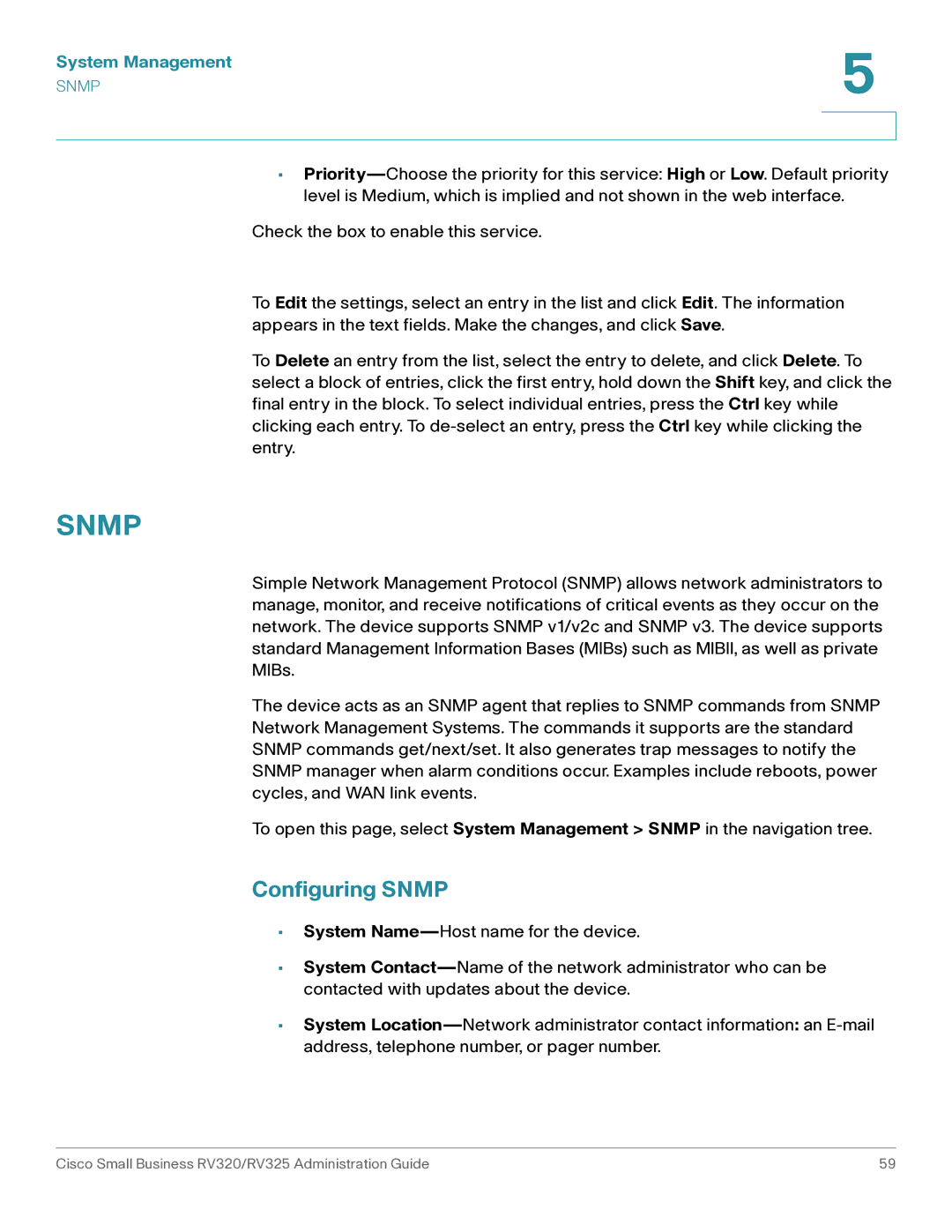System Management | 5 |
| |
SNMP |
|
|
|
|
|
•
Check the box to enable this service.
To Edit the settings, select an entry in the list and click Edit. The information appears in the text fields. Make the changes, and click Save.
To Delete an entry from the list, select the entry to delete, and click Delete. To select a block of entries, click the first entry, hold down the Shift key, and click the final entry in the block. To select individual entries, press the Ctrl key while clicking each entry. To
SNMP
Simple Network Management Protocol (SNMP) allows network administrators to manage, monitor, and receive notifications of critical events as they occur on the network. The device supports SNMP v1/v2c and SNMP v3. The device supports standard Management Information Bases (MIBs) such as MIBII, as well as private MIBs.
The device acts as an SNMP agent that replies to SNMP commands from SNMP Network Management Systems. The commands it supports are the standard SNMP commands get/next/set. It also generates trap messages to notify the SNMP manager when alarm conditions occur. Examples include reboots, power cycles, and WAN link events.
To open this page, select System Management > SNMP in the navigation tree.
Configuring SNMP
•System
•System
•System
Cisco Small Business RV320/RV325 Administration Guide | 59 |
